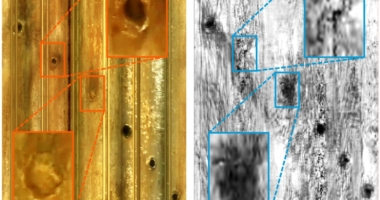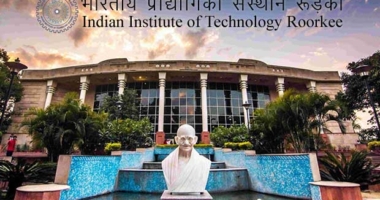Drones are increasingly being used in a variety of industries for 3D mapping, providing a cost-effective and efficient way to survey large areas. 3D mapping systems for drones typically consist of a drone, a camera, GPS, and other sensors, along with software to process data into a 3D map. Different types of 3D mapping systems are available, each with its own strengths and weaknesses. Photogrammetry is the simplest and most cost-effective option, LiDAR is the most accurate but most expensive, and SfM is a good compromise between accuracy and cost, suitable for a wide range of applications. Choosing the best system for a particular application depends on the user’s needs and budget. Overall, 3D mapping systems are helping to revolutionize the way that data is collected and analyzed, making it more efficient and cost-effective.
The use of drones for 3D mapping has gained popularity in various industries such as surveying, construction, agriculture, and mining. A 3D mapping system comprises a drone, a camera, and a GPS unit. During mapping, the drone flies over the area while the camera captures images of the terrain, and the GPS records the drone’s location and orientation. These images are stitched together to create a 3D map.
The accuracy of the map depends on the quality of the images captured by the camera. High-resolution cameras capture more details, leading to a more accurate map. Additionally, precise drone patterns are necessary for proper alignment of images.
The data collected by the 3D mapping system can be used to create various maps such as topographic maps, orthomosaics, and digital elevation models. These maps help plan construction projects, monitor crop growth, and assess natural disasters’ impact.
To help drones navigate and collect data accurately, 3D mapping systems use a combination of sensors, cameras, and software. The sensors detect obstacles and objects in the environment, while the cameras capture images and video. The software combines the data from the sensors and cameras to create a 3D map of the environment.
This map guides the drone’s flight path and helps it navigate the environment safely. It identifies obstacles, allowing the drone to avoid them and areas of interest, such as buildings and roads, to collect data.
Overall, the use of 3D mapping systems in drones is improving data collection and analysis by providing detailed maps of large areas. By increasing efficiency and reducing costs, these systems are revolutionizing the way data is collected and analyzed.
Understanding the Components of a Drone’s 3D Mapping System
As drones become more prevalent, their use in 3D mapping is becoming increasingly popular. A drone’s 3D mapping system is made up of several components that work together to capture images and create detailed maps.
One of the primary components of a drone’s 3D mapping system is the drone itself. The drone is used to fly over the area to be mapped, and it is equipped with a camera that captures images of the terrain. The drone is also equipped with a GPS unit that records the drone’s location and orientation, allowing the images to be stitched together to create a 3D map.
The camera is another essential component of a drone’s 3D mapping system. The camera captures high-resolution images of the terrain, which are then used to create a 3D map. The quality of the images captured by the camera is critical to the accuracy of the 3D map. High-resolution cameras are able to capture more detail, resulting in a more accurate map.
The GPS unit is also an essential component of a drone’s 3D mapping system. The GPS unit records the drone’s location and orientation, which is used to stitch together the images captured by the camera to create a 3D map. Without a GPS unit, the images captured by the camera would not be accurately aligned, resulting in an inaccurate 3D map.
Finally, the software used to create the 3D map is an essential component of a drone’s 3D mapping system. The software takes the images captured by the camera and combines them with the data from the GPS unit to create a 3D map. The software is also responsible for identifying areas of interest, such as buildings or roads, allowing the drone to collect data from those areas.
In conclusion, a drone’s 3D mapping system is made up of several essential components that work together to capture images and create detailed maps. These components include the drone itself, the camera, the GPS unit, and the software used to create the 3D map. As the use of drones in 3D mapping continues to grow, it is essential to understand the components that make up these systems and how they work together to provide accurate and detailed maps.
Comparing Different Types of 3D Mapping Systems for Drones
The use of drones for 3D mapping is becoming increasingly popular, as it offers a cost-effective and efficient way to survey large areas. However, with a variety of 3D mapping systems available for drones, it can be difficult to know which one is best for a particular application. In this article, we will compare the different types of 3D mapping systems for drones to help users make an informed decision when selecting the right system for their needs.
Photogrammetry
The first type of 3D mapping system for drones is photogrammetry. This system uses photographs taken from the drone to create a 3D map of the area. Photogrammetry is a relatively simple and cost-effective way to create 3D maps, making it suitable for a wide range of applications. However, it is not as accurate as other types of 3D mapping systems, and it can be difficult to get good results in areas with complex terrain.
LiDAR
The second type of 3D mapping system for drones is LiDAR. This system uses laser pulses to measure the distance between the drone and the ground, and it is much more accurate than photogrammetry. LiDAR is ideal for applications that require high accuracy, such as surveying for construction projects. However, it is also more expensive than photogrammetry, and it can be difficult to use in areas with dense vegetation.
Structure from Motion (SfM)
The third type of 3D mapping system for drones is Structure from Motion (SfM). This system uses multiple images taken from the drone to create a 3D map of the area. SfM is more accurate than photogrammetry but not as accurate as LiDAR. It is also relatively inexpensive, making it a good choice for applications that require a moderate level of accuracy.
When choosing a 3D mapping system for a drone, it is important to consider the accuracy required for the particular application, as well as the complexity of the terrain and the cost of the system. While photogrammetry is the most cost-effective and versatile option, it may not be accurate enough for some applications. LiDAR is the most accurate but also the most expensive, while SfM offers a good balance of accuracy and cost.
Conclusion
Overall, there are several different types of 3D mapping systems available for drones, each with its own advantages and disadvantages. By considering the accuracy required for the application, the complexity of the terrain, and the cost of the system, users can make an informed decision when selecting the right 3D mapping system for their needs.
To summarize, when it comes to 3D mapping systems for drones, there are different types of systems available, each with its own strengths and weaknesses. Photogrammetry is the simplest and most cost-effective option, but not as accurate as LiDAR or SfM. LiDAR is the most accurate but the most expensive, and SfM is a good compromise between accuracy and cost, suitable for a wide range of applications. Choosing the best system for a particular application depends on the user’s needs and budget. For more information, refer to the original article on How does a drone’s 3D mapping system work?
Don’t miss interesting posts on Famousbio







